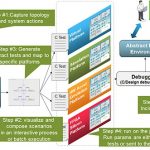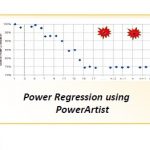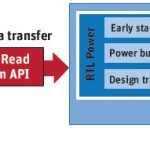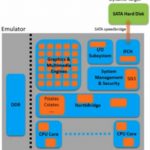In one of my whitepapers “SoCs in New Context – Look beyond PPA”, I had mentioned about several considerations which have become very important in addition to power, performance, and area (PPA) of an SoC. This whitepaper was also posted in parts as blogs on Semiwiki (links are mentioned below). Two important… Read More
Tag: dac
Replacing the British Museum Algorithm
In principle, one way to address variation is to do simulations at lots of PVT corners. In practice, most of this simulation is wasted since it adds no new information, and even so, important corners will get missed. This is what Sifuei Ku of Microsemi calls the British Museum Algorithm. You walk everywhere. And if you don’t walk to… Read More
Moving up Verification to Scenario Driven Methodology
Verification complexity and volume has always been on the rise, taking significant amount of time, human, and compute resources. There are multiple techniques such as simulation, emulation, FPGA prototyping, formal verification, post-silicon testing, and so on which gain prominence in different situations and at different… Read More
A Complete Simulation Platform for Mobile Systems
If we take an insight into the semiconductor industry, we can easily find that mobile systems are the main drivers of this industry. The Smartphone business has remained at the top since a good number of years. Although the Smartphone sales growth has started showing a sign of stagnation, it is still a main contributor with a solid… Read More
My Tryst with Semiconductors and EDA
Yes, today I realize it feels like a tryst with semiconductors. In actual meaning; it wasn’t a love affair with semiconductors, but I must say the greatest thing it taught me about how it approaches towards perfection. And that became the guiding principle in my life; how can I do something better. Of course nothing is perfect in life… Read More
How PowerArtist Interfaces with Emulators
Last month in DAC I could see some of the top innovations in the EDA world. EDA is a key enabler for advances in semiconductor designs. Among a number of innovations worth mentioning (about which I blogged just after DAC), the integration of Mentor’s Veloce with ANSYS’ PowerArtist for power analysis of live applications caught my… Read More
How Emulation Enables Complex Power Intent Modeling
As the number of CPU, GPU, and IP is growing in an SoC, power management is becoming more and more a complex task in itself. A single tool or methodology may not be enough for complete power management and verification of an SoC. In an SoC, there can be multiple modes of operations involving hardware and software interactions, different… Read More
Gary Smith Passed Away Last Friday
I expect most of you have already heard the sad news through other channels: Gary Smith died last Friday, July 3rd, from pneumonia in Flagstaff, Arizona.
I must have first met Gary back in Dataquest days when I was at VLSI Technology. Gartner then acquired Dataquest and eventually shut down the EDA practice and laid Gary off. He then… Read More
Apple Watch – A Great New Design, Needs More
During 52[SUP]nd[/SUP] DAC, there was a special session where a brand new Apple watch was opened and each of its components was shown with a brief description about it. I found this tear down session a great innovative idea coming from DAC organizers; actually two buzzing products, AppleWatch and DJI’s Phantom Drone were opened… Read More
SmartDV at DAC and More
As we are aware about SmartDV Technologies, a fast emerging company in IP space with offices in Bangalore and San Diego, its booth in 52ndDACwas located at a prominent position in front of DAC Pavilion on the exhibits floor. So, most of the crowd coming to attend sessions in DAC Pavilion had a glimpse of SmartDV. I met Deepak Kumar Tala… Read More







